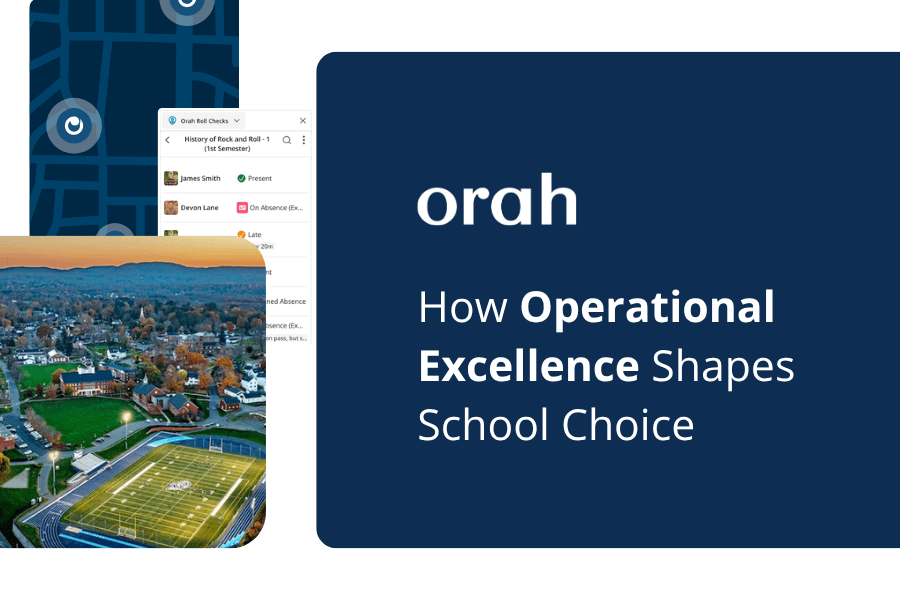Positive School Culture – Does Your School Have It?
Kavyapriya Sethu
•
September 12, 2022

Yuval Noah Harari (in his book—Sapiens) sought to understand the history of humankind’s domination of the earth and our development of complex modern societies.
He says, "Ants and bees can also work together in huge numbers, but they do so in a very rigid manner and only with close relatives. Wolves and chimpanzees cooperate far more flexibly than ants, but they can do so only with small numbers of other individuals that they know intimately. Sapiens can cooperate in extremely flexible ways with countless numbers of strangers. That’s why Sapiens rule the world, whereas ants eat our leftovers and chimps are locked up in zoos and research laboratories."
That's a fascinating take.
In today's complex world, our success still depends on how well we can work with one another. Group culture is one of the most powerful forces on the planet. It makes or breaks organizations, teams, and families.
Peter Skillman is a passionate design leader. And he has been conducting an experiment for years with groups that included engineering students from top U.S. schools, telecom engineers from Taiwan, business school students, and lawyers. The challenge was simple. Under a given time, build the tallest free-standing structure out of 20 sticks of spaghetti, 3 feet of tape, 3 feet of string, and one marshmallow. Oh, and the marshmallow has to go on the top. He also gave this challenge to a bunch of kindergarteners to take.
Now for the surprising turn of events. Architects and engineers consistently built the tallest, most stable structures. However, he found that (and I kid you not) kindergartners, on every objective measure, scored higher than every other group of adults.

How did five-year-olds perform so much better?
“The kindergartners succeed not because they are smarter but because they work together in a smarter way. They are tapping into a simple and powerful method in which a group of ordinary people can create a performance far beyond the sum of their parts.” shares Daniel Coyle, the author of the book 'The Culture Code.'
This iterates what we already discussed: Group culture is one of the most powerful forces on the planet. We all want a strong culture at our workplace, in institutions we study, at home, and within groups, we interact with regularly.
Does your school have a strong culture— a set of values, expectations, and practices that guide and inform the actions of teachers and students?
Before you answer the question, here are some more insights to consider.
Commander’s Intent and Finding Your Core
An army spends a good amount of time and energy planning. But often, nothing goes according to plan because of the unpredictable situations the soldiers are put in.
The US military has a reputation for being highly successful in utter chaos. So how do they collaborate and successfully execute high-level strategies without an elaborate plan in place? In the 1980s, the Army adapted its planning process, inventing a concept called Commander’s Intent (CI).

The commander’s intent is a broad description and definition that paints a picture for your team of what success looks like. In the army, CI manages to align the behavior of soldiers at all levels without requiring play-by-play instructions from their leaders. Colonel Kolditz, the head of the behavioral sciences division at West Point, gives an example.
“Suppose I’m commanding an artillery battalion, and I say, ‘We’re going to pass this infantry unit through our lines forward.’ That means something different to different groups. The mechanics know that they’ll need lots of repair support along the roads because if a tank breaks down on a bridge the whole operation will come to a screeching halt. The artillery knows they’ll need to fire smoke or have engineers generate smoke in the breech area where the infantry unit moves forward, so it won’t get shot up as it passes through. As a commander, I could spend a lot of time enumerating every specific task, but as soon as people know what the intent is they begin generating their own solutions.”
Finding the core is analogous to writing the Commander’s Intent. It is setting what is your most important goal.
Culture = Vision + Mission + Core Values

Across successful businesses, the core is captured by the vision and mission statement. The mission statement describes what one is trying to do, why, and how. It lays out the 'purpose of being.' Based on that purpose, the vision statement is a future-oriented declaration, describing what one aspires to achieve or become in the end. Sometimes mission statements also include a summation of the organization's values.
For example, IKEA's mission is to "offer a wide range of well-designed, functional home furnishing products at prices so low that as many people as possible will be able to afford them." In doing so, they are aspiring "to create a better everyday life for the many people."
When lived, breathed, and woven into the very fabric of your team's culture, mission, vision, and values can form the backbone of your long-term, sustainable success. A strong culture encompasses your vision, mission, and values and aligns the behavior of everyone. Your students and teachers know what to do and how to act even when no one is watching or telling them what to do.
Now, if I were to walk up to anyone in your school and ask them to define the culture of the institution, would they be able to confidently articulate it? Or if I were to ask random students how they feel about school, their peers, and learning, would they answer positively?
You might have an image of what your culture might be. However, is it aligned with the perceived image of your staff and students? It is crucial to analyze your school culture regularly and to readjust it if necessary. To understand how everybody perceives the culture, ask them directly. And to obtain honest and open answers, we recommend using anonymous surveys.
What would your students say?
Here are some questions you can ask to get a better sense of what your students think about school culture and student engagement:
- Do you feel safe (emotionally and physically) at school?
- Do you feel comfortable being who you are at school?
- Do you have subjects or extra-curricular activities you are excited to learn at school?
- Do you have people within the school community (teachers, counselors, or peers) with whom you talk to, especially regarding your academic progress, well-being, and life outside of school?
- Do you have people within the school community (teachers, principal, peers, or seniors) who you look up to or aspire to be like?
- Do you feel that your success is recognized and celebrated?
- Do you believe that the school disciplines fairly?
- Can you articulate the shared goal and vision within the school?
Here is a long-form survey you can refer to build your questionnaire.
What would your faculty say?
It's not just the students you should be talking to but also your faculty members. What would your staff say if you were to ask them the following questions?
- Do you feel respected by your colleagues and students at your school?
- Are you generally excited to come to work?
- Do you feel that your success is recognized and celebrated?
- Is your class a safe place to take academic risks?
- Is your class a safe place for students to voice their concerns and problems?
- Are questions, creativity, originality, and new ideas welcome at your school (both by you and your students)?
- Would you agree with the following statement: My school doesn't view mistakes as failures, but they are seen as opportunities to learn and grow for both students and educators.
- Would you agree with the following statement: Students are consistently encouraged to set goals (that are personal to them), and they are supported by the school to achieve them.
- Would you agree with the following statement: faculty are encouraged to have direct feedback conversations with students, parents, and other faculty members. The leadership team follows the same.
- Can you articulate the shared goal and vision within the school?
In the next couple of posts, we will be discussing more about how you can build and nurture your school culture. We will draw inspiration from the works of Daniel Coyle, an advisor to many high-performing organizations, including the Navy SEALs, Microsoft, Google, and the Cleveland Guardians, and the author of the book— The Culture Code. More specifically, we will be discussing what specific set of skills is required to create interactions exactly like the ones used by the kindergartners building the spaghetti tower and pave the way to establish a strong group culture.
“Skill 1—Build Safety—explores how signals of connection generate bonds of belonging and identity. Skill 2—Share Vulnerability—explains how habits of mutual risk drive trusting cooperation. Skill 3—Establish Purpose—tells how narratives create shared goals and values. The three skills work together from the bottom up, first building group connection and then channeling it into action.” — The Culture Code, Daniel Coyle
Note: We recently launched our video podcast channel - Orah Unleashed. We are setting out to explore how schools and families can maximize student potential. Be the first to hear industry experts, school leaders, and researchers talk about topics just like the one we just discussed today. Take part in insightful conversations on how we can do right by our kids and empower them to succeed by subscribing to our channel TODAY!
Download your guide to knowing where students are
When you sign up, we'll send you a guide detailing what it takes to setup your daily operations to maintain student location awareness using your routine school processes like attendance, student leave, late arrivals, early dismissals & emergencies. You'll also recieve an invite to join the Orah community and get the quarterly newsletter.














